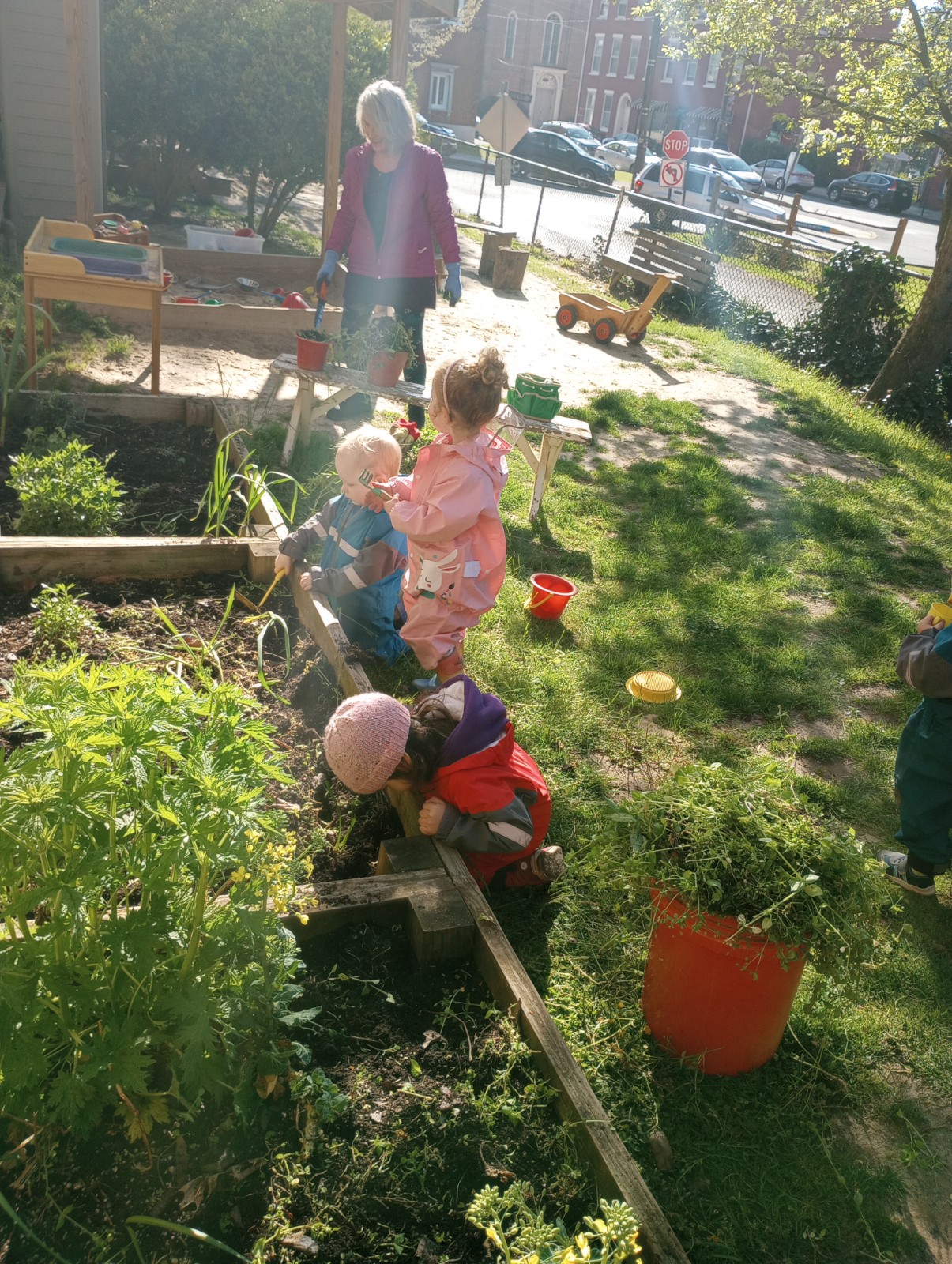
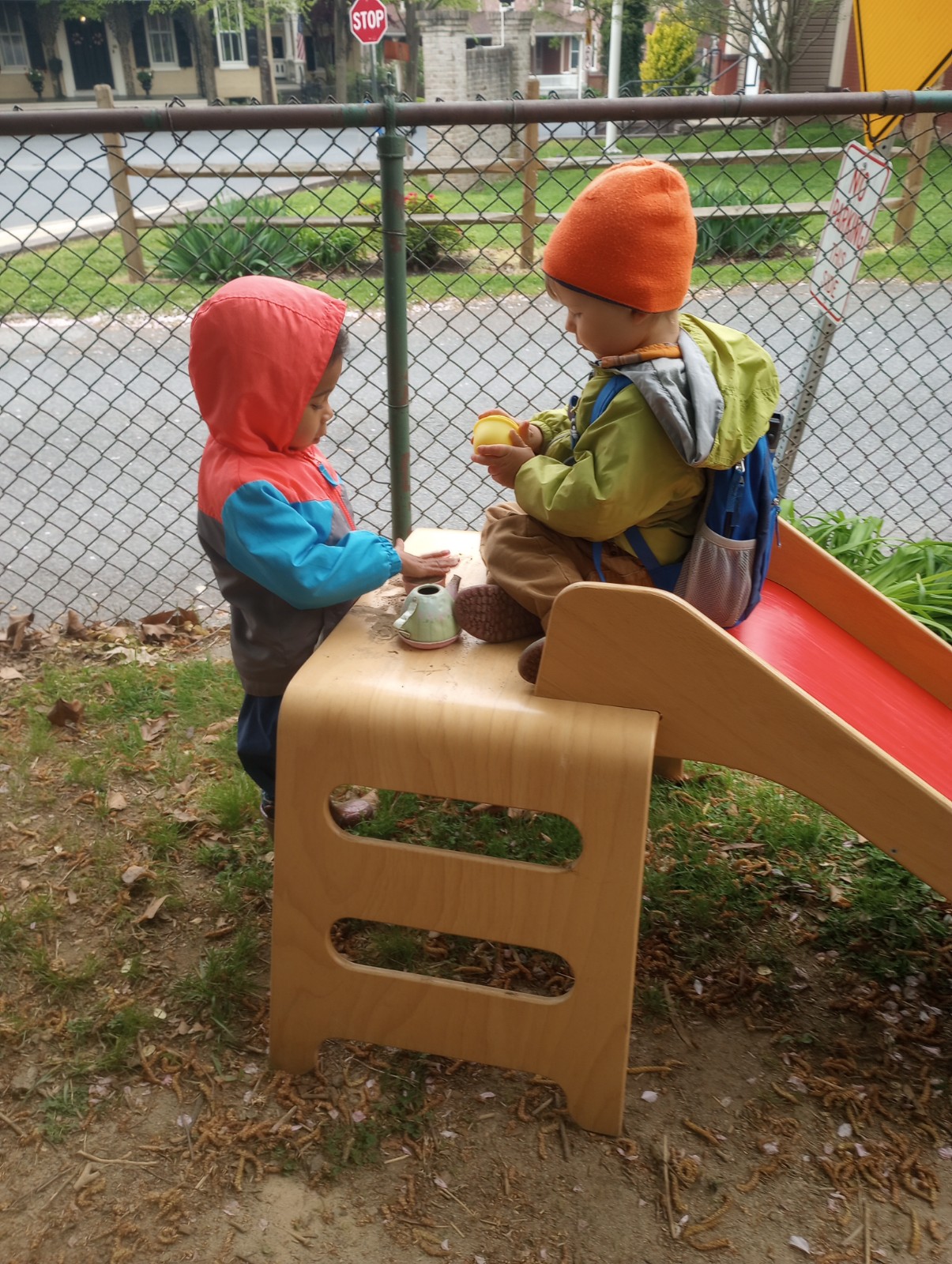
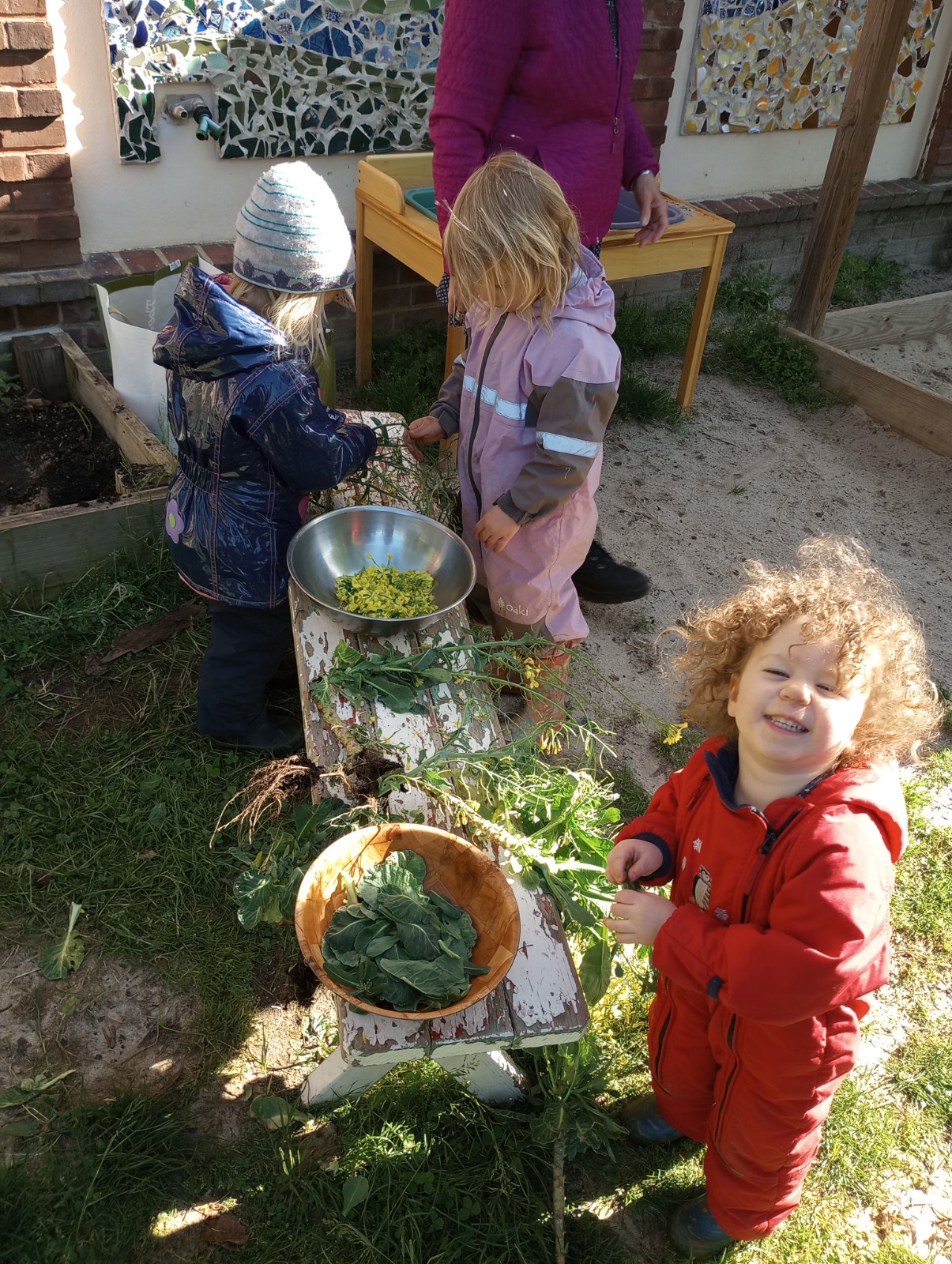
Written by Stepping Stones teacher, Tabea Steinbesser-Fitz.
What better way to start each school day than being outside on our little playground behind the school, enjoying the warm sunshine, or even spring rain splashing in our faces? Our Stepping Stones children were very busy the last few weeks of school with planting our garden boxes with plants we can harvest in the fall when school resumes: ground cherries, kale, snack peppers, garlic, potatoes, lavender, parsley, and marigolds for the silk-dyeing of our “golden capes of courage” for Michaelmas. The children loved digging in the soil and finding earthworms and other critters, and of course, watering the plants (while often getting wet themselves!). We were overjoyed that many sunflower seeds which we had peeled from large wilted sunflower heads in the fall and sprinkled along our garden fence came up all over the yard. We fenced off an area for our “sunflower garden” to grow.
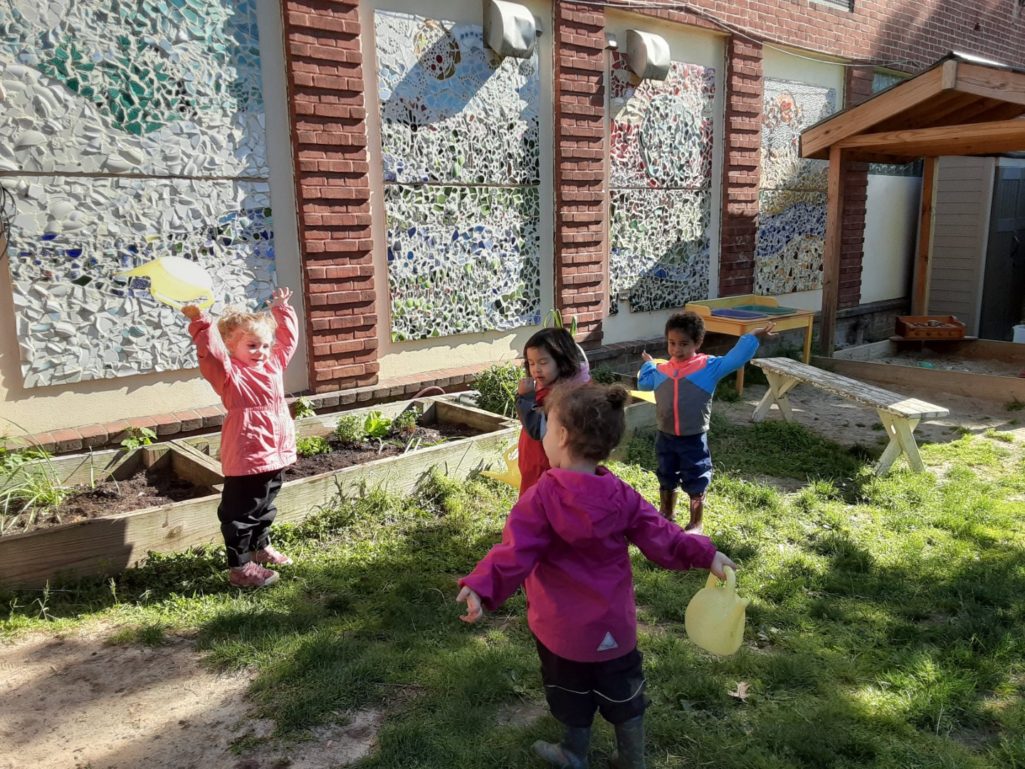
Our big round swing was the most beloved place to hang out, with lots of laughter, giggles and singing songs, while others preferred baking birthday cakes and serving “hot ice cream”, climbing over the obstacle stump course, or engaging in hide and seek games. We did our water coloring outside and created beautiful covers for the Stepping Stones Recipe booklets which were our Mother’s Day gifts (also freshly baked scones).
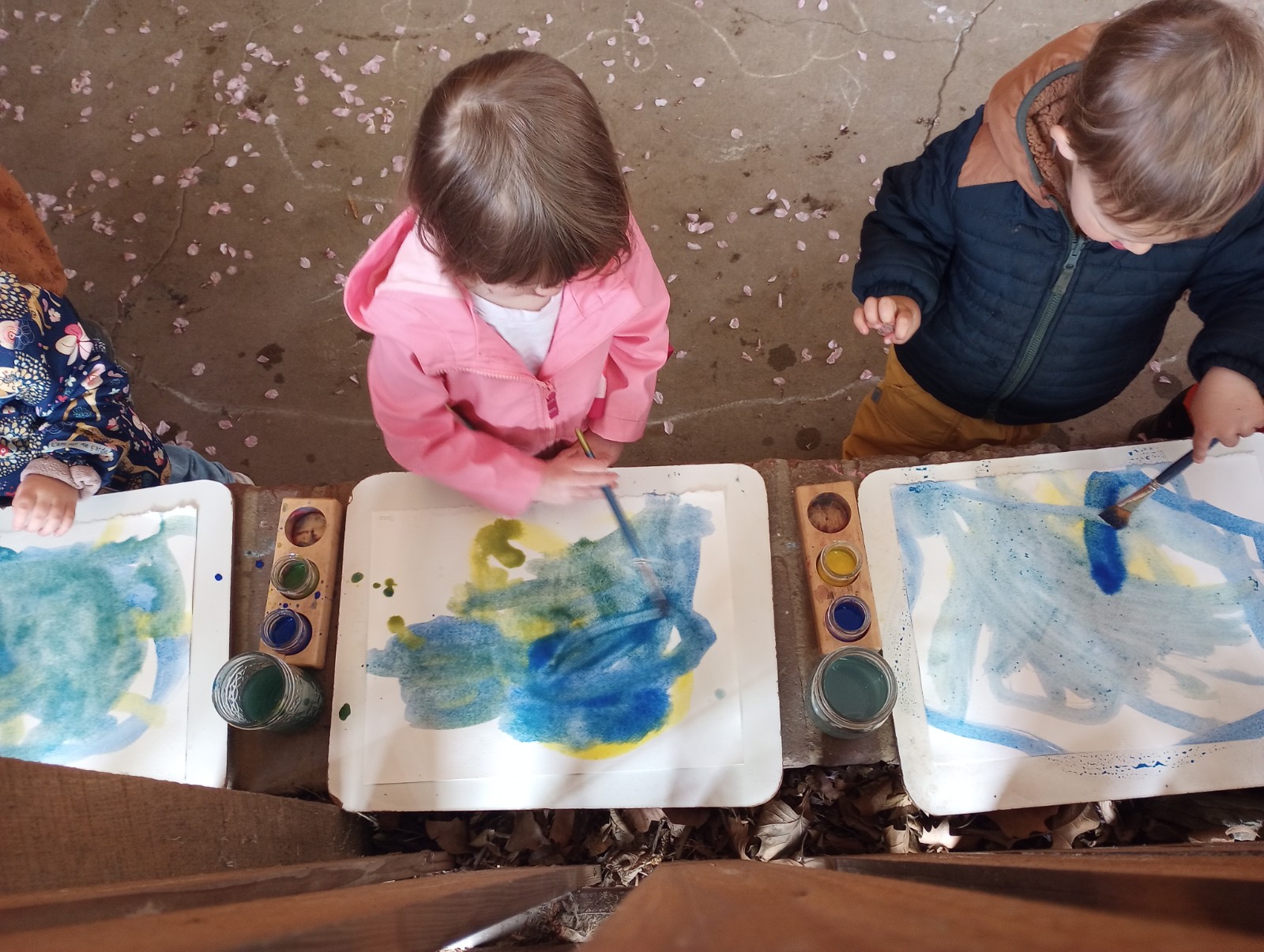
One day we noticed that a mommy and daddy bird had begun to build a nest in the hole of the school’s brick wall using dried grasses and even pieces of yarn (only at a Waldorf School will birds find these useful treasures on the playground!). In the following weeks, we got to experience the nest building, the uncertainty of baby birds hatching, hearing the cheerful chirping sounds from the brick hole, and the busy parents flying in and out to get food. We got to witness the little birdies taking their first flights over our playground!
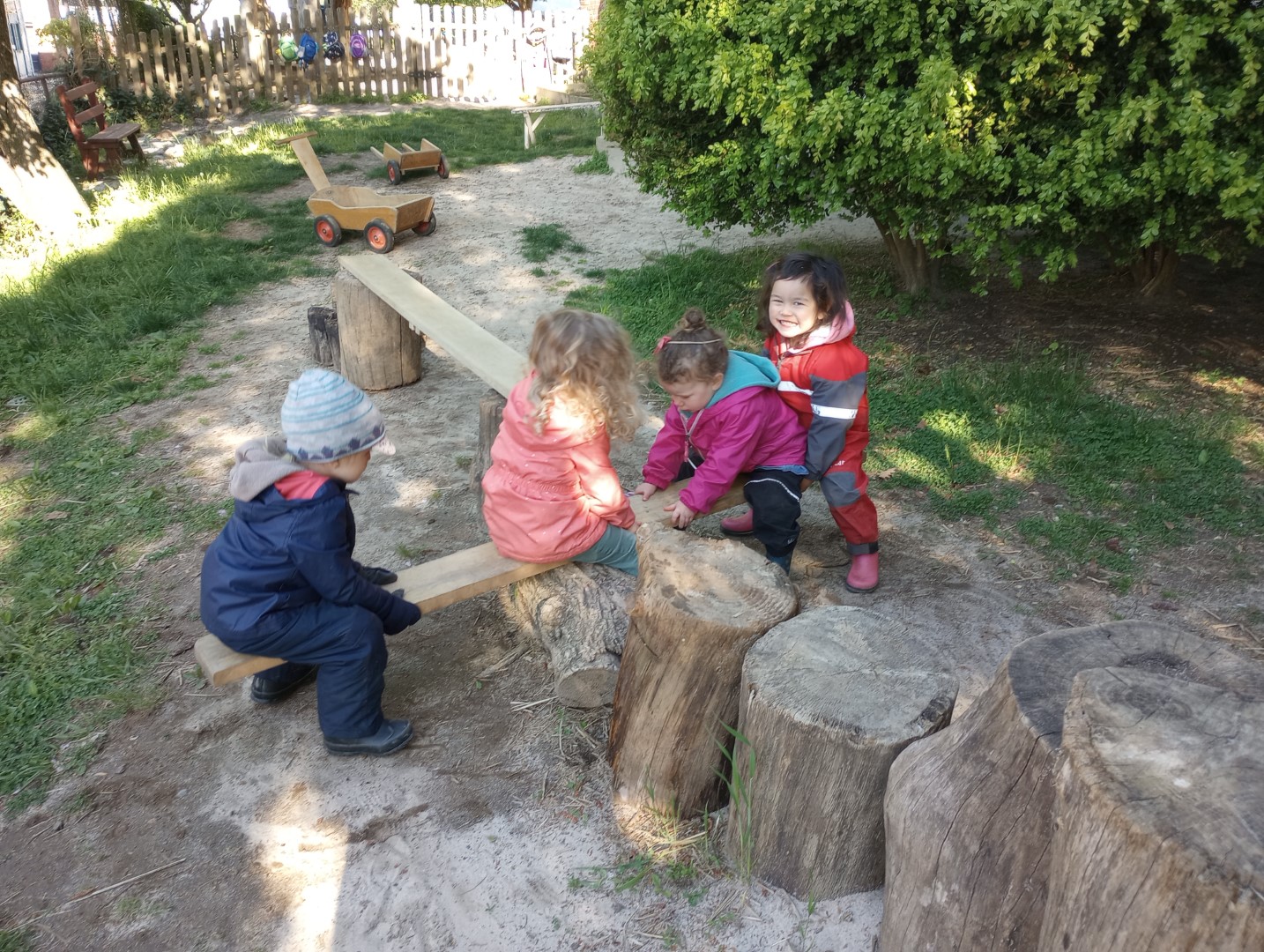
Inside the classroom, the children became experts over the course of the year in building large obstacle courses across the whole room as well as hide-outs created with play stands, sheets as roofs, stumps and chairs and doors, and sheepskins, silks, blankets, and pillows served as cozy beds. It was always busy in the play kitchen and our baby dolls, and even us teachers, were fed well. We stacked chairs lengthwise on the floor to build long trains and one of the stops was usually at Molly’s Cafe. Our knitted barn animals and the big fuzzy momma cat were the most beloved toys in the classroom. They received so much love and care but also pulling and grabbing. When they got injured, the children wrapped them very carefully in silk and held them in their lap or hands until they got better again.
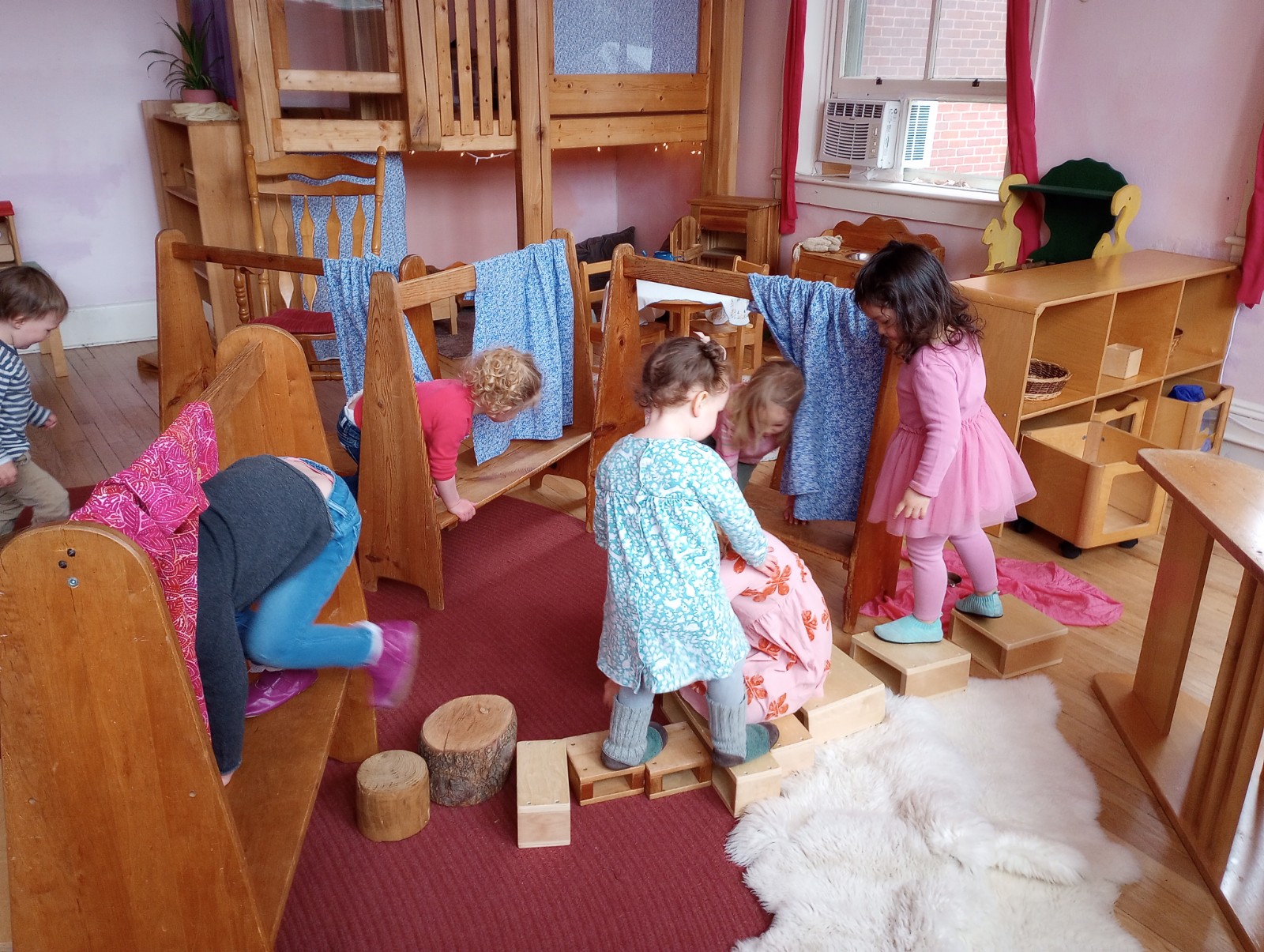
It can get bumpy during play sometimes. This is the age where everything speaks “mine!” to the 2 and 3 year olds. By the end of the year, the children developed a larger vocabulary, more patience, and some tools on how to use their words, and even began negotiating. These years are very important for developing first social and self-regulating skills.
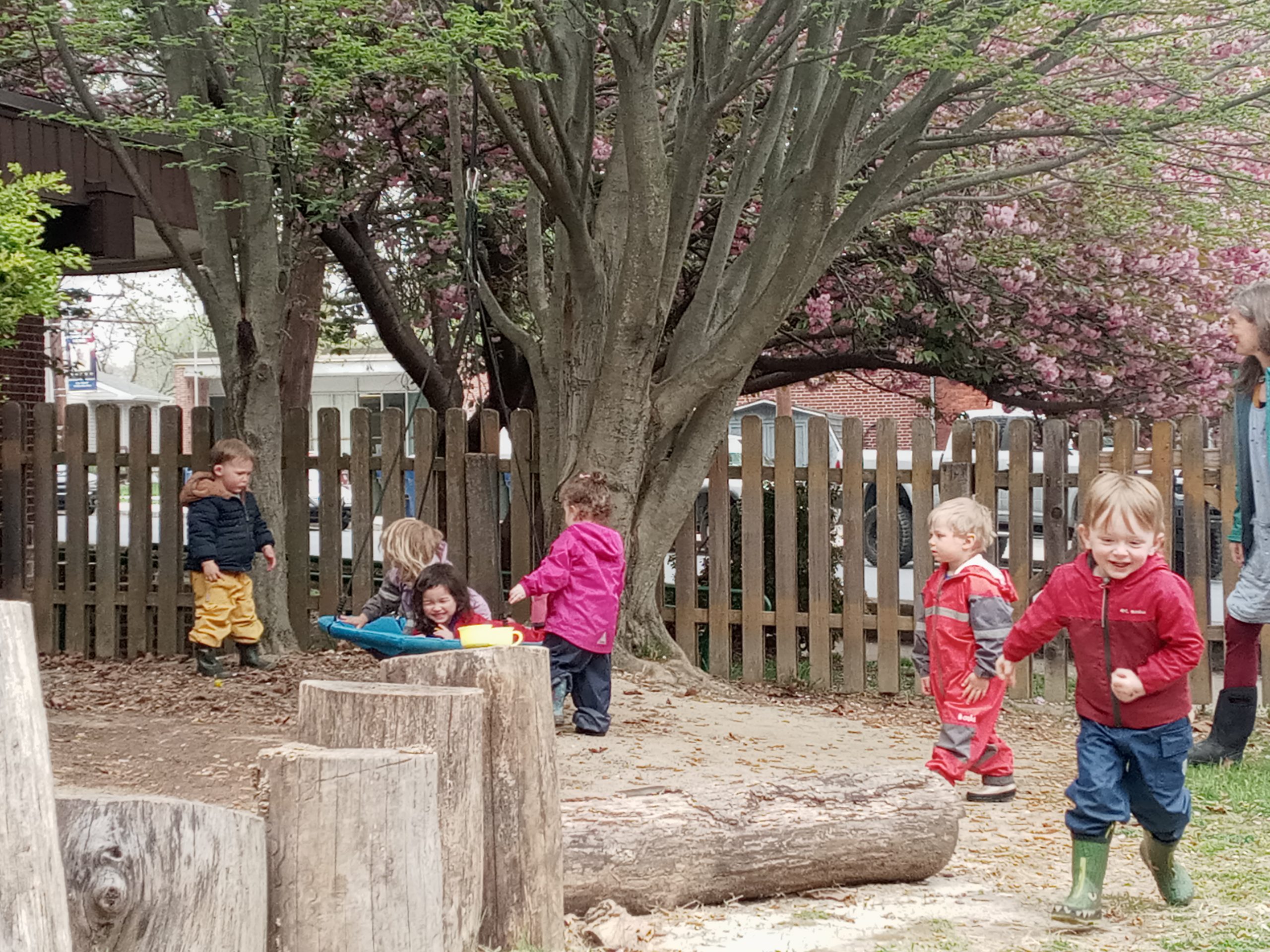
The best part is that the children have all developed such love for each other and often made their first friendships in school. It is such a joy to see spontaneous big hugs from the children (that sometimes lead to tumbling over). When we teachers get those hugs and a whisper “I love you!”, then I know that all of my efforts in helping the children grow into compassionate, understanding, and kind human beings are absolutely worth it.
